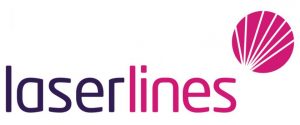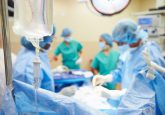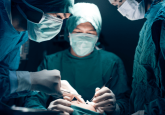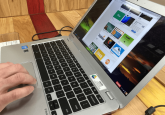Surgical planning with patient-specific 3D-printed medical models

3D printing can improve patient care, reduce costs and increase speed at every step in the medical value chain. Find out more about the benefits and general use of 3D-printed medical models for surgical planning in this column from Laser Lines (Oxford, UK) ahead of 3DMedLIVE 2019: 3D printing in surgery.
>> Find out more about 3DMedLIVE
Register as a member of 3DMedNet for exclusive 3DMedLIVE updates
3D printing can improve patient care, reduce costs and increase speed at every step in the medical value chain. Positive clinical outcomes are often decided by several factors: fully briefed and prepared surgeons, efficient completion of the procedure within a safe timeframe and an understanding of patient-specific risks to avoid complications during or post-surgery. All of these factors benefit from using 3D printing technologies.
Highly accurate recreations of patient anatomy allow surgeons to interact directly with the patient anatomy/pathology prior to entering the operating theatre. This helps optimize surgical plan, forsee any patient specific issues and convey to patients just what is involved in a procedure.
Surgeons work in a 3D world, so it makes sense to analyze patient-specific 3D-printed models, particularly complex pathology, or for spatial and tactile orientations. This allows procedures to be refined during pre-surgery, meaning fewer complications, shorter procedures and faster patient recovery times.
Surgeons are using 3D models already to determine – and even practice performing – specific surgery. 3D-printed models can display physical, spatial and tactile orientations that computer models simply can’t match. Patient specific moulds and surgical guides for more accurate cuts can be used, while implants can be shaped to an exact replica of the anatomy prior to procedures.
At Guy’s and St Thomas NHS Foundation Trust (London, UK), the surgical team produced two intricate, patient-specific 3D models ahead of an adult to child kidney transplant. The patients were father and son, Brendan and Dexter Clarke, and the family credits these models in helping to relieve the anxiety they felt ahead of the operation.
This expertise also extends to the training and education of future surgeons. By having access to patient-specific, advanced, multi-material 3D-printed models, students can practice, plan and prepare on models that simulate true anatomical structures. A potential alternative to animal or human cadavers, 3D-printed models can be used outside of a clinical environment, in any setting that can allow physician training.
The ability to produce life-like medical models on an in-house Stratasys (MN, USA) PolyJet 3D Printer is credited to saving 3—4 hours in operating room time per surgery. This has resulted in operating room cost savings of up to GBP£20,000 per surgery, with a reduction in surgical planning time of 93%.
More solutions for hospitals
Stratasys continues to maintain strong and healthy relationships with medical institutions around the world. We firmly believe that the need for hospitals to have an in-house 3D printer is becoming a stronger argument. Eventually, such compelling arguments are expected to transform into standard of care.
An in-house printer offers significant cost-savings on each model, as well as time-savings with models being 3D printed in as little as 6—10 hours. Crucially, this means that surgical teams have accurate, patient-specific models in their hands far more quickly, enabling more time for surgical preparation.
In addition to the speed of model creation and lower costs, another benefit to on-site 3D printing is the knowledge and expertise gained as surgeons, radiologists and 3D modelers work together. This close interaction and collaboration allows those involved in 3D printing to explore new ways of representing the patient data, choosing alternate materials, explore the inclusion or exclusion of structures to allow the surgeon a more relevant or complete picture as needed.

The opinions expressed in this feature are those of the author and do not necessarily reflect the views of 3DMedNet or Future Science Group.




